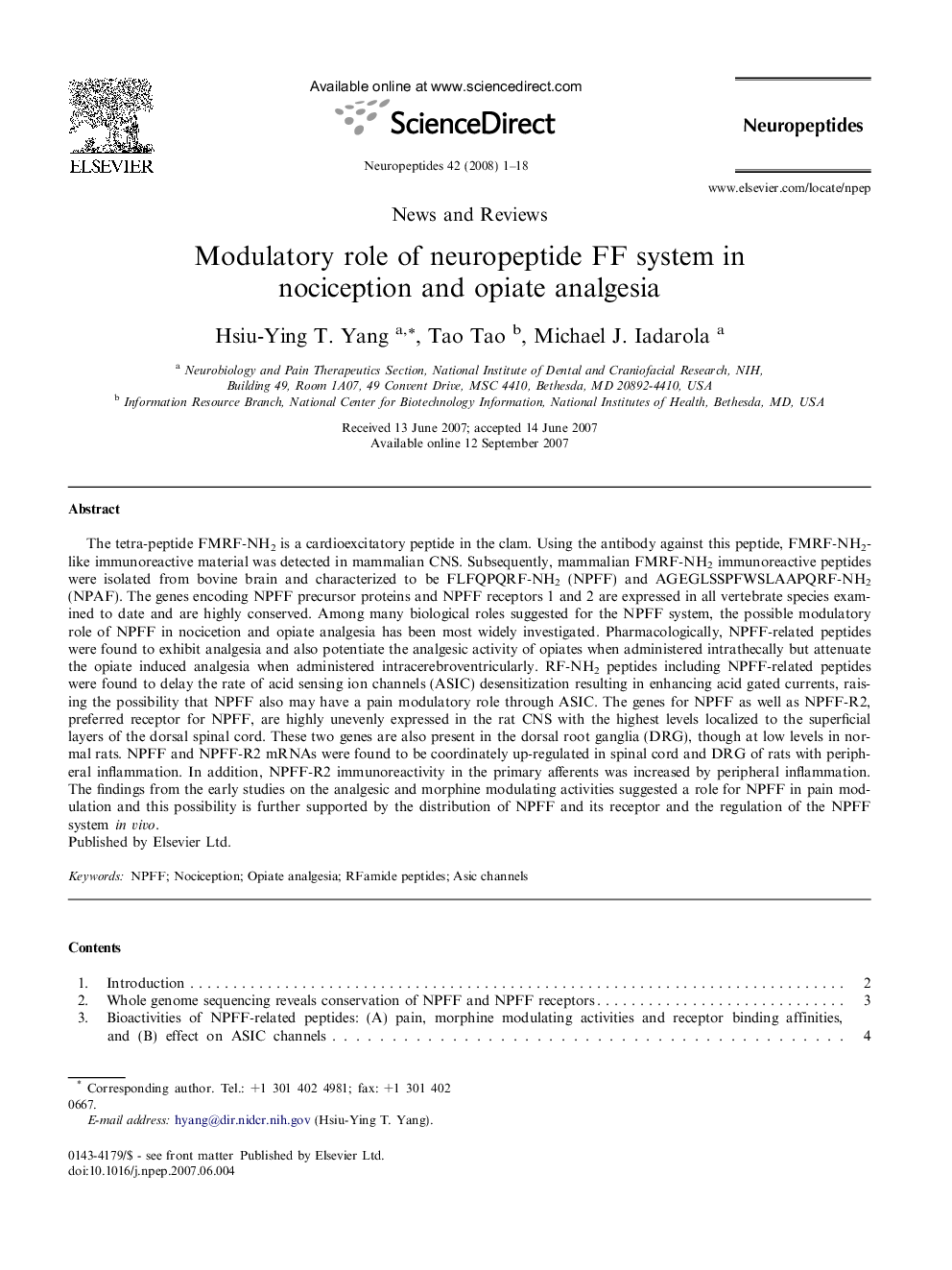| Article ID | Journal | Published Year | Pages | File Type |
|---|---|---|---|---|
| 2808316 | Neuropeptides | 2008 | 18 Pages |
The tetra-peptide FMRF-NH2 is a cardioexcitatory peptide in the clam. Using the antibody against this peptide, FMRF-NH2-like immunoreactive material was detected in mammalian CNS. Subsequently, mammalian FMRF-NH2 immunoreactive peptides were isolated from bovine brain and characterized to be FLFQPQRF-NH2 (NPFF) and AGEGLSSPFWSLAAPQRF-NH2 (NPAF). The genes encoding NPFF precursor proteins and NPFF receptors 1 and 2 are expressed in all vertebrate species examined to date and are highly conserved. Among many biological roles suggested for the NPFF system, the possible modulatory role of NPFF in nocicetion and opiate analgesia has been most widely investigated. Pharmacologically, NPFF-related peptides were found to exhibit analgesia and also potentiate the analgesic activity of opiates when administered intrathecally but attenuate the opiate induced analgesia when administered intracerebroventricularly. RF-NH2 peptides including NPFF-related peptides were found to delay the rate of acid sensing ion channels (ASIC) desensitization resulting in enhancing acid gated currents, raising the possibility that NPFF also may have a pain modulatory role through ASIC. The genes for NPFF as well as NPFF-R2, preferred receptor for NPFF, are highly unevenly expressed in the rat CNS with the highest levels localized to the superficial layers of the dorsal spinal cord. These two genes are also present in the dorsal root ganglia (DRG), though at low levels in normal rats. NPFF and NPFF-R2 mRNAs were found to be coordinately up-regulated in spinal cord and DRG of rats with peripheral inflammation. In addition, NPFF-R2 immunoreactivity in the primary afferents was increased by peripheral inflammation. The findings from the early studies on the analgesic and morphine modulating activities suggested a role for NPFF in pain modulation and this possibility is further supported by the distribution of NPFF and its receptor and the regulation of the NPFF system in vivo.
